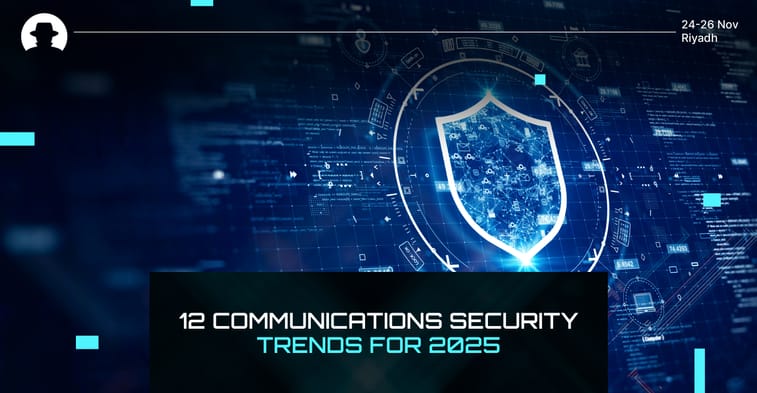
What we’ve learnt about deepfake scams in 2025
From fake celebrity endorsements to cloned voices in mobile scams, 2025 proved that deepfakes are now a real business and consumer risk.
Read More
At this time of year, cybersecurity researchers get their heads down to explore the current threat landscape and develop their predictions for the next 12 months.
Content communications security company Kiteworks has released its 2025 forecast, shaping the way sensitive content will be protected over the coming year. You can read the full report here – it lays out 12 critical trends that are absolutely worth integrating into your 2025 cybersecurity strategy if you want to protect sensitive data, ensure you’re compliant with data regulation, and enhance your organisation’s operational efficiency in an ever more complex digital environment.
In case you don’t have time to read the whole thing right now, we’ve pulled those 12 trends to give you a quick-read overview here.
In 2025, 75% of the world's population is expected to be covered under data privacy laws. This widespread adoption of privacy regulations means that all organisations – including yours – will need to enhance compliance efforts and implement more sophisticated data protection measures.
The alarming rise in software supply chain attacks is projected to continue, with associated costs spiraling globally. Organisations must move beyond basic compliance frameworks and implement zero-trust models and rigorous security measures to mitigate these risks
Kiteworks highlighted the complex nature of cybersecurity in today’s digital environment. To combat increasingly sophisticated cyber threats, organisations need to implement overlapping security layers for robust protection – so if one layer is compromised, others are in place to maintain overall security.
The report noted that 83% of organisations now use content collaboration platforms to share files externally with clients, partners, and other third parties. So the adoption of secure content collaboration platforms with granular access controls for content in motion and at rest is crucial.
When your organisation uses multiple communication tools, you face increased cyber risks. According to the Kiteworks report, there’s a direct correlation between the number of communication platforms and data breaches. Consolidating and streamlining communication tools can reduce operational complexity and improve visibility across sensitive data exchanges.
Almost three quarters of organisations surveyed by Kiteworks reported at least three API-related data breaches within the last two years. Secure APIs will enable automation while mitigating risks through advanced governance – and API security is increasingly important in our interconnected digital ecosystems.
Expanding mandates, such as CMMC 2.0 and AI Acts, will redefine compliance strategies over the coming year. Organisations must stay ahead of the evolving regulatory requirements in their region and industry to maintain compliance, protect their customers and all stakeholders, and avoid penalties.
Data classification is essential for effective governance, compliance, and operational efficiency, helping organisations mitigate risks and protect sensitive data. But Kiteworks found that only 10% of organisations have fully classified their unstructured data. AI-driven classification tools enhance this process by automatically identifying patterns and applying contextual tagging, reducing errors and ensuring proper data protection.
In 2025, multidimensional risk assessment will be crucial. AI-driven analytics and integrated threat intelligence will evaluate risks across dynamic parameters, enabling precise vulnerability prioritisation. Context-aware security will evolve, incorporating predictive AI to detect behavioral anomalies and preemptively address risks. This approach will integrate assessments across compliance, cybersecurity, and operational risk domains, providing a holistic view of interconnected risks and enabling agile security strategies.
Malicious actors are increasingly exploiting AI to develop more advanced attack methods. Organisations must counteract this trend by implementing robust AI governance frameworks and secure model development practices. And at the same time, it’s important to adopt AI-driven threat detection tools to get proactive about identifying and neutralising AI threats.
Implementing compliance-driven security frameworks will help your organisation meet the growing demands of global regulation, and maintain consumer trust by showing that you’re integrating international cybersecurity standards and agreements.
All organisations need to put quantum threats on their radar and start implementing quantum-resistant cybersecurity measures as soon as possible, to protect against future attacks that could break existing encryption.
Join us at Black Hat MEA 2025 to share your perspective and meet potential partners – and shape the future together.
Join the newsletter to receive the latest updates in your inbox.

From fake celebrity endorsements to cloned voices in mobile scams, 2025 proved that deepfakes are now a real business and consumer risk.
Read More
As AI tools move from pilots to the fabric of everyday work, the same systems that boost productivity are leaking sensitive data and stretching identity controls past their limits.
Read More
AI is now woven into every layer of modern software development, but most security teams can’t see where or how it’s being used.
Read More